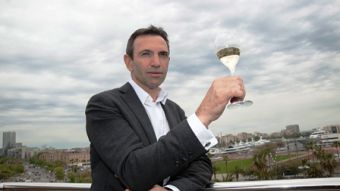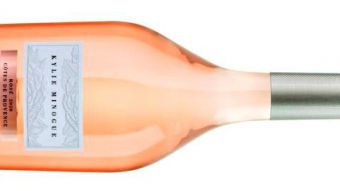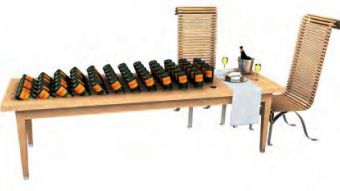Interview with Hervé Dantan, chef at Cave de Champagne Lanson
Last year, in the middle of the pandemic, this prestigious “Maison de Champagne” was celebrating the 260-year anniversary of its foundation (1760). According to the history books, it was the fourth winery established for the production of champagne. It is a Champagne House whose wines are known for their lovely fresh, acidic style yet which are produced without malolactic fermentation!! Over these 260 years, it has remained faithful to its principles.
Due to the current circumstances, we were unable to visit the Champagne House to interview Hervé Dantan, its cellar master, in person, but we were nevertheless able to forward him a few questions which we were very interested in getting his response to.
SW. You are the son of Champagne winegrowers. You graduated in oenology and spent some time working for wineries in Bordeaux, Burgundy, Alsace and California, where you certainly learned a lot about viticulture. What do you remember from those times?
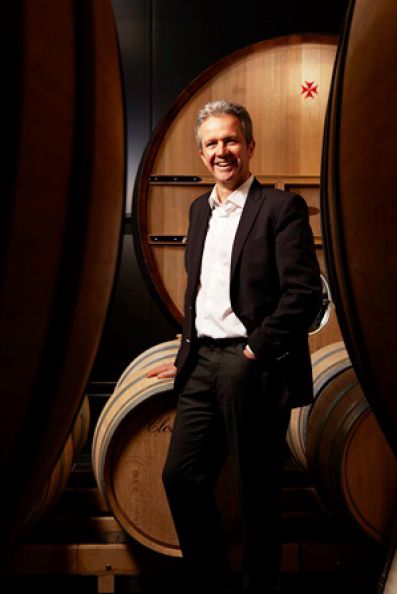 Hervé Dantan, Chef de Cave in Champagne Lanson As a child I used to help out in the vineyard, so the world of wine was familiar to me even if wine wasn’t an obvious career choice. I was a curious child with an interest in science and research. But soon my fascination in geology combined with a strong interest in geology’s impact on wine and I found myself studying oenology in Reims. Experience in different wine regions (Bordeaux, Burgundy, Alsace and California) have taught me that behind each fine wine hides an important oenological know-how and a precision viticulture. It is essential to consider the style of the wine through the know-how and the quality of the grapes, and thus of the viticulture.
Hervé Dantan, Chef de Cave in Champagne Lanson As a child I used to help out in the vineyard, so the world of wine was familiar to me even if wine wasn’t an obvious career choice. I was a curious child with an interest in science and research. But soon my fascination in geology combined with a strong interest in geology’s impact on wine and I found myself studying oenology in Reims. Experience in different wine regions (Bordeaux, Burgundy, Alsace and California) have taught me that behind each fine wine hides an important oenological know-how and a precision viticulture. It is essential to consider the style of the wine through the know-how and the quality of the grapes, and thus of the viticulture.
SW. You have been with Lanson for 8 years now (2013), how did you come to join this historic Champagne House? Was it very different from where you had worked previously?
I joined Maison Lanson for its history, its heritage and for all the brand conveyed in Champagne region. By heritage I mean especially the richness of its reserve wines, its vintages. What could be more exciting for a winemaker than being able to access to a, exceptional collection of Vintages, Reserve wines and incredible wines.
I arrived in 2013 enriched by my experience and my oenology expertise but joining a Champagne House such as Lanson requires a great deal of humility in front of its weight history and ancestral know-how. I had to adapt to new methods and to ensure that it is handed down to future generations.
SW. Logically, each Champagne House has its own philosophy and way of working, but it is also logical that each chef de cave would want to leave his/her own stamp on the wines made. What is yours?
Leave your mark while erasing yourself behind the weight and the style of the House, the key is to find the right balance. At my level, I worked a lot on the use of reserve wines, the development of plot-by-plot vinification while strengthening the work of knowledge of our wines and our plots. It is this work of precision that I brought to Lanson.
SW. The most challenging part of crafting a champagne is to successfully create the "coupages" (blends). Do you have any tricks or secret formulas you use for the crafting of the champagnes? How many base wines do you usual have to play with? What is the oldest you have stored? What is the oldest vin de reserve?
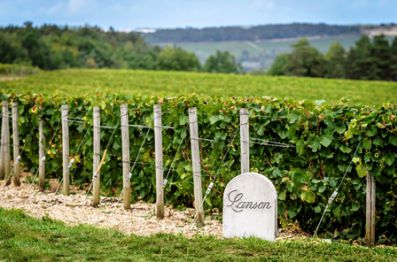 Lanson´s vineyards At my arrival, I worked closely with my predecessor who shared his knowledge and passion to transmit champagne Lanson house style secrets, it was a great period of transmission and sharing. My role is continually perfecting the style inherited.
Lanson´s vineyards At my arrival, I worked closely with my predecessor who shared his knowledge and passion to transmit champagne Lanson house style secrets, it was a great period of transmission and sharing. My role is continually perfecting the style inherited.
Maison Lanson has a remarkable collection of reserve wines both in terms of quality and quantity. We currently have wines spanning the years 1998 to 2018, mostly selected from our Premiers and Grands Crus. We treat this magnificent library, if you will, with the respect it deserves; my role is to ensure that we always have 20 years of reserve wines in our cellars.
I usually play with around 200 base wines, which the oldest one stored 2003.
SW. As we mentioned in the interview introduction, Lanson is a Champagne House that does not use malolactic fermentation for the crafting of its champagnes. How challenging does that make the winemaking process? How important is it to the House style?
It is challenging:
- in terms of vineyards this requires the most perfect maturity possible for all sugar/acid balances, a maturity which respects both the acid and the freshness of the grapes.
- in terms of cuverie it requires impeccable hygiene and working with a lot of care, including controlling temperatures
At Lanson, we craft our wines following the original principle of Champagne vinification, with predominantly non-malolactic fermentation. A time-honoured process that respects the values of patience and precision. This results in wines of incomparable freshness and extraordinary aromatic richness, and with a rare ageing capacity throughout the years. Few Houses practise this vinification method and we are proud of safeguarding this distinctive approach to making Champagne. The Lanson style is also the result of an extraordinary history and heritage that we hold on to through our reserve wines and our magnificent collection of vintages that starts with the year 1904 — an incredibly rich legacy!
SW. When you joined Lanson in 2013, a major investment in the modernisation of the winery was undertaken which included the creation of a new barrel-ageing cellar. We don't know if it was your idea or if it was already in the works, but what did this change bring to the winemaking process? Did Lanson obtain the results it was hoping for?
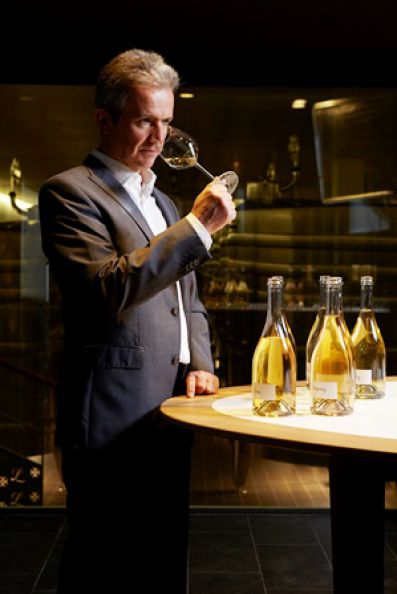 The investment to build a new cuverie was implemented in 2014, so I participated in the selection of oak barrels, smaller vats and of the suppliers. This investment marked an important milestone for the Maison. With these high-profile facilities combining traditional wine-making with modern technology (a single plot cuverie and a chai bois), we were able to go further in parcel vinification while preserving Lanson house style and philosophy. This led to more regularities on our multi-vintage bruts, gave us access to more base wines and vins of reserve aged differently (in stainless steel vats, cemente and now oak barrels).
The investment to build a new cuverie was implemented in 2014, so I participated in the selection of oak barrels, smaller vats and of the suppliers. This investment marked an important milestone for the Maison. With these high-profile facilities combining traditional wine-making with modern technology (a single plot cuverie and a chai bois), we were able to go further in parcel vinification while preserving Lanson house style and philosophy. This led to more regularities on our multi-vintage bruts, gave us access to more base wines and vins of reserve aged differently (in stainless steel vats, cemente and now oak barrels).
SW. In terms of Lanson and organic winegrowing, can you give us an update on where Lanson is in this regard? What have the challenges been? and what changes have you had to make to your way of working?
In this regard and driven by a constant search for quality, Lanson committed to a more sustainable viticulture almost 10 years ago. In 2018, we were the first Champagne House to have set up a collective to actively support our partner growers in the transition to sustainable viticulture, promoting a balance between the soils, the plants and people. The influence of terroirs on the wines requires acute knowledge of their diversity and specificity to allow an even finer selection of the grapes, it is a key element to making great wines.
Lanson pioneered in biodynamics viticulture. I am convinced that our quest for excellence must involve an even stronger commitment to organic viticulture. Our Malmaison estate is the perfect expression of our commitments, it is one of the largest 100% organic vineyards, we grow 16 ha in organic and biodynamic viticulture from which comes our cuvée Le Green Label Bio (certified AB and Demeter). We just hired our new Vineyards and Sustainable Development Manager, Mélody Stroh, and her arrival is in line with the dynamic of sustainable development at Lanson. She is responsible for the Maison’s vineyard and the technical support of Lanson’s partner growers to achieve the French High Environmental Value certification. She also has the mission to ensure the quality and traceability of sourced grapes that contribute to the richness and style of the Lanson wines.
SW. If we are not mistaken, you advocate sustainable practices in the vineyards. How important is this to Lanson?
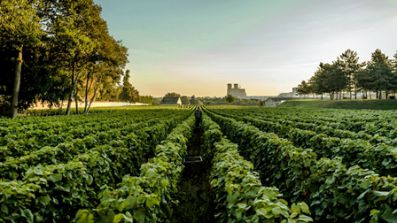 Clos Lanson, with Reims Cathedral in the background I believe that our quest for excellence needs to be guided more by a stronger commitment to organic viticulture. We need to go further in defining each terroir because their influence on the wines requires a perfect knowledge of their diversity and specificity to allow an even finer selection of the grapes, it is a key element to making great wines. Being in full awareness of the Lanson style enables to identify and reveal the terroirs that guarantee the singularity and quality of our champagnes.
Clos Lanson, with Reims Cathedral in the background I believe that our quest for excellence needs to be guided more by a stronger commitment to organic viticulture. We need to go further in defining each terroir because their influence on the wines requires a perfect knowledge of their diversity and specificity to allow an even finer selection of the grapes, it is a key element to making great wines. Being in full awareness of the Lanson style enables to identify and reveal the terroirs that guarantee the singularity and quality of our champagnes.
SW. Does the fact that some of your vineyards are owned and others subcontracted make it more difficult for you to control these sustainable practices? What percentage of your vineyards do you own? What is the relationship with the winegrowers with whom you have agreements in place? How many of these vineyards are classified as Premier Cru and Grand Cru? In which areas are your most "cossetted" vineyards?
We have a historic relationship with our partner growers, through several generations, which allowed us to access to more than 100 different crus and to develop a technical relationship based on trust. These strong relationships are specific of the Maison, it allows us to have very constructive exchanges and a mutual understanding of where we want to go. We work extremely closely together, we’re in contact every day and make regular vineyard visits right through until the harvests.
We own around 15% of our vineyards.
A 50% of the vineyards are classified as Premier Cru and Grand Cru. Our cossetted vineyards ? The Grands Crus, Verzenay, Le Mesnil-sur-Oger, Avize and also Trépail, Dizy and Loches-sur-Ources where we have press houses and a strong presence with our long time and loyal partner growers.
SW. Climate change is a reality, and although Champagne is in a more northerly location than say, Provence, you will surely also have noticed changes over the past few years. What has changed for you, in terms of climate, in recent years compared to the end of the 20th century?
The biggest challenges are in the vineyard and in the cuverie as a response to climate changes, and the reactivity is the key word. By having an increasing reactivity in the vineyard due to the sudden change of climate, especially during the harvest which requires to adapt very quickly. The harvest may require to be done faster or earlier, and required a selective sorting. The years are followed and do not resemble absolutely, me must adapt and react to each situation and be more efficient and responsive.
There are positive and negative impacts due to the climate change :
- positive consequences: on the quality of the musts, a higher degree of maturity, higher frequency of (great) vintages (for example : after 2018 and 2019, the 2020 harvest is showing exceptional potential too)
- Negative consequences: a more delicate vine growth due to the weather patterns, the rising temperatures and vine diseases. Climate change brings early harvests and changes to the grapes themselves (the challenge is also preserving acidity levels)
SW. What alternatives or solutions are being considered at Lanson to offset climate change and minimise the impact on the vineyards in the medium and long term?
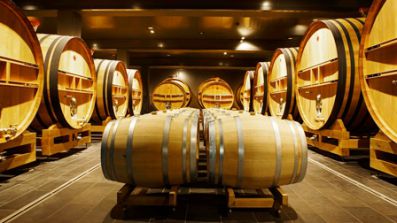 Climate change requires us a keenly observing of the vineyard and its reaction. This requires working the soil according its specificity and years, making more frequent and accurate maturity controls in search of mature maturity and a preserved sugar/acid balance combined with berries tasting.
Climate change requires us a keenly observing of the vineyard and its reaction. This requires working the soil according its specificity and years, making more frequent and accurate maturity controls in search of mature maturity and a preserved sugar/acid balance combined with berries tasting.
SW. Your hands are the focus of Lanson’s "It’s all about love” advertising campaign. What message is Lanson seeking to convey with this campaign?
Lanson has relaunched its branding by building it around the Maison’s core values: openness, kindness, humility, authenticity and elegance - and above all else, the quality of its wines. The new campaign is centred around ‘It's All About Love’. Love for the soil, for the terroir, of a job well done, a sustainable love, a love of sharing, of being together, of making people happy.
In the world of Champagne, hands very often express the hands-on labour that goes into each bottle. Here, they become protective and enveloping, generous and deeply human. With this campaign, Maison Lanson fully expresses the notion of sharing that is held so dear, the attention paid to others, the sincerity of a long-lasting relationship, and, as a watermark, the authenticity that is the essence of the Maison. From soil to glass, it is the hand of Man that links unique moments of sharing and love. Afterall, "it's all about love".
SW. Talking about it being “all about love”, having a good atmosphere in the workplace is essential to the smooth running of any company. We understand that every year the harvest of your prestigious Clos Lanson is a very special occasion in which all the Lanson employees participate. It seems to be very much a “corporate’ day as well as a “fun” day. Is this your way of ensuring your employees feel fully involved in the life of the Champagne House?
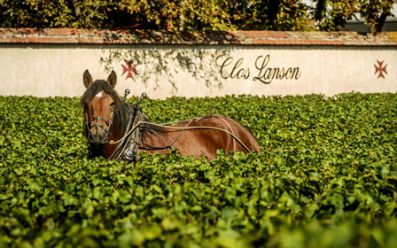 The harvest at Clos Lanson is a very special moment for the Maison Le Clos Lanson is the only one clos within the heart of Reims, a 1-hectare sits on the hill of Courlancy next to the winery and viewing the Cathedral. It benefits from a unique environment and offers exceptional Chardonnay and it has a special place in the hearts of Lanson employees. The harvest is carried out by them, their family and friends so as not to break the intimacy with the grapes pampered and awaited all year round, but not only. We also receive partners, importers and distributors who put their hands together to harvest in a warm and friendly atmosphere this chardonnay that will enter the prestige cuvée of the house. The harvest of Le Clos is the perfect way to live a real moment of sharing and joy.
The harvest at Clos Lanson is a very special moment for the Maison Le Clos Lanson is the only one clos within the heart of Reims, a 1-hectare sits on the hill of Courlancy next to the winery and viewing the Cathedral. It benefits from a unique environment and offers exceptional Chardonnay and it has a special place in the hearts of Lanson employees. The harvest is carried out by them, their family and friends so as not to break the intimacy with the grapes pampered and awaited all year round, but not only. We also receive partners, importers and distributors who put their hands together to harvest in a warm and friendly atmosphere this chardonnay that will enter the prestige cuvée of the house. The harvest of Le Clos is the perfect way to live a real moment of sharing and joy.
SW. And lastly, according to some very well-informed sources, Lanson will be unveiling a new image in the Spanish market this summer. What does Lanson want to convey through this change of image? What will it consist of? Will it be just for the Spanish market or will it be global?
Maison Lanson pursues the renewal of its branding, initiated with its new communication campaign, by complete renovating its Champagne range structure, more coherent and consistent. Lanson bottles have evolved gently and subtly, with a new packaging to bring the presentation of the range into line with the values conveyed by the Maison. The bottle reinforces its identity and history through the Lanson Cross, a symbol of kindness which became the emblem of Lanson Champagnes. The bottles display the Royal Warrant, a distinction awarded to Lanson by Queen Victoria in 1900 and which the Maison has kept without interruption until today. The founding date of the Maison, 1760, has also been highlighted to emphasise our history and time-honoured expertise.
A major innovation for a Champagne House: the informative black label. Maison Lanson has rethought its back labels by focusing on greater transparency and more precise information. The consumer will now know for each cuvée: the details of the blends, the dosage, the harvest base, the reserve wines, the disgorging date and the traceability of the bottles. Through this improvement, the Maison promotes its expertise and underscores the precise and exceptional quality of our wines to the consumer.
It is not only dedicated to the Spanish market.


